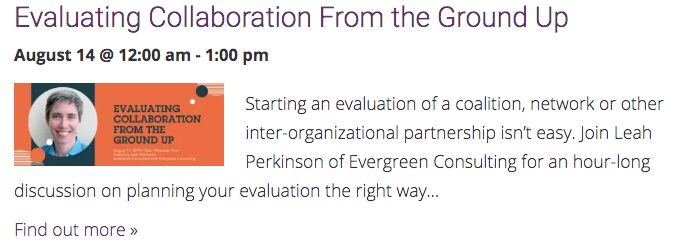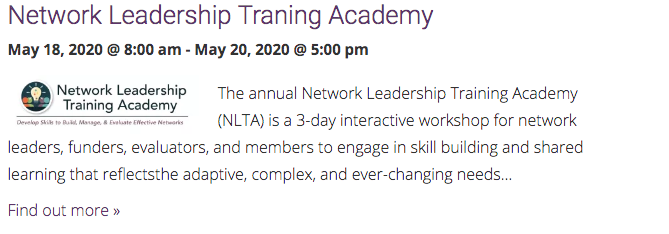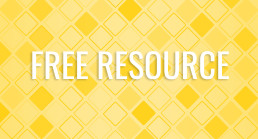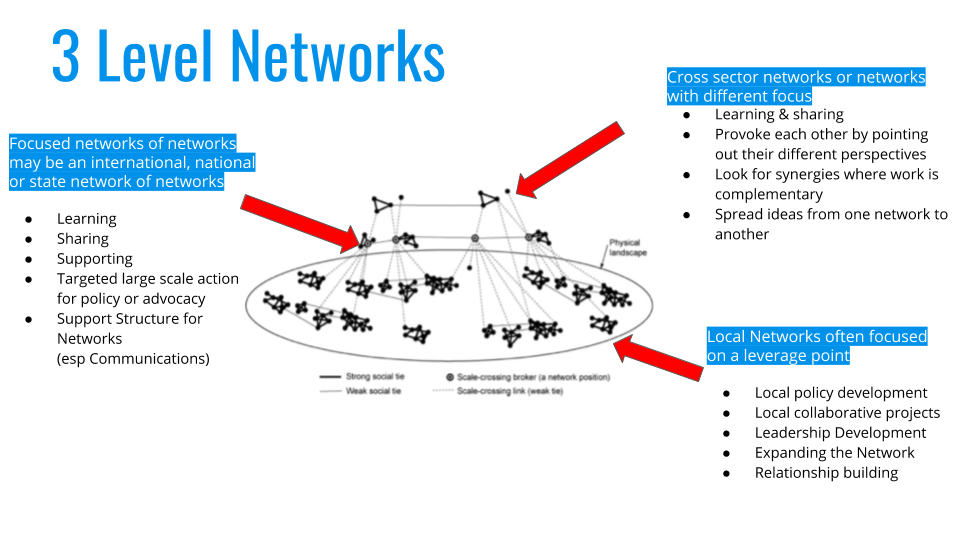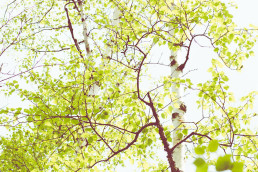Check Out These Network Weaving Events!
Did you know we have an Events Page? We publish Network Weaving Events hosted by our Network Weaver Consultants and other amazing weavers. Below are some upcoming webinars, meetings and trainings.
[ap_spacing spacing_height="35px"]
[ap_spacing spacing_height="35px"]
If you have an event you'd like us to publish, email: info@dev.networkweaver.com.
Featured Image from unesco.org
The Importance of Learning in Networks
We are seeing a shift in the social transformation space from evaluation to learning and support for change. Evaluation has too often been a judgment-based, funder driven approach to determining whether progress has taken place that tends to penalize risk-taking and innovation and focus mindlessly on outcomes even when it’s not clear what the solutions are.
System-shifting networks are sets of organizations, individuals and funders who are committed to innovating, experimenting, collaborating and learning to shift to healthier systems. In such networks, participants need a system of support that enables learning and change to happen on individual, organizational, collaborative project, network, culture and system levels: it’s what is called fractal change. *
*A fractal is a phenomenon in nature or mathematics that manifests as a repeating or self-similar pattern at every scale.
From my experience, I’ve seen change and learning are most likely to happen in collaborative projects and when scaffolding for learning is in place. So if we want to track anything as our networks go forward, it would be in these two places.
[ap_spacing spacing_height="10px"]
A. The scaffolding for learning consists of the following:
- Trained catalysts: Facilitators who enable people in collaborative projects to pick up network culture/values, skills and practices more rapidly (especially equity) and help projects be more successful; learning weavers who capture what is learned and share with the network so all benefit from learning in the project. [ap_spacing spacing_height="10px"]
- Innovation funds that not only support these projects but bring together funded projects in Communities of Practice where participants learn how to learn more explicitly. [ap_spacing spacing_height="10px"]
- Just-in-time tracking (for example surveys on things like network values and network leadership) that participants use to see where they (as individuals, groups, networks, etc) are having challenges in shifting to a network way. Having quantitative measures enables the individual, group or network to quickly determine strengths and challenges and then develop strategies to shift those challenges and later see if those strategies worked. We have developed surveys on network values, network leadership, collaboration skills and whole network assessments, see resources. [ap_spacing spacing_height="10px"]
- Cross-network learning and sharing sessions: networks (or more usually projects) reach out to learn from other networks. This learning is shared with the field. [ap_spacing spacing_height="10px"]
- A communications system that makes it easy to share learning within projects, among projects, with the network and with other networks. [ap_spacing spacing_height="15px"]
B. Collaborative projects are where people collaboratively work on shifting their own values and behavior in a supportive, nurturing environment and at the same time are continually trying new approaches and learning from what they do.
We could greatly benefit by focusing on these small groups as the petri dish of transformation: introducing different practices and discovering which have the potential for both personal and network transformation.
The trick to scaling change is to support the change that happens in collaborative projects to ripple out throughout the network and on to networks of networks.
So what would be helpful is for those of you who are network evaluators to watch and record and reflect back the whole network:
- Is change happening in projects? When is it most successful? What are participants doing that seems to accelerate individual and collaborative change? [ap_spacing spacing_height="10px"]
- What scaffolding is in place and functioning well? Where is work needed? How are these pieces of the scaffolding supporting learning? What aspects seems to be the most effective is supporting learning? [ap_spacing spacing_height="10px"]
- Is learning spreading from projects to network? From projects and networks to networks of networks? How is it spreading? What accelerates spreading? [ap_spacing spacing_height="10px"]
- Is learning being applied to future projects? Examples? Can we follow the path? What enables people to use other people’s/project’s learning?[ap_spacing spacing_height="15px"]
Another interesting aspect of self-organizing networks (where people are involved in several collaborative projects at any one time) is the flow of innovations from one project to other projects as the participants in the original project share their innovations with their other projects. This is how zoom became the standard for most networks - early adopters like me used it with all our projects and its use spread with amazingly rapid speed. It would be really useful to see if this kind of spread of other innovations generated by projects or networks could be tracked to determine how spread could be accelerated.
I feel that learning has been grossly underdeveloped in networks. I believe that if we started spending much more of our time in learning while we are doing, transformation could occur quite quickly.
So please start experimenting and sharing back with us what you learn about learning!
Liberating Structures in Network Development
When working in a network comprised of technical folks, it is easy stay in the familiar territory of presenting knowledge when the network gathers. Sometimes assumptions are made about scientists, policy makers, or engineers and how they prefer to interact at a face to face meeting. "Watch that “fluffy” stuff!"

My sense is a lot of this push-back originates in bad experiences where “interactive methods” were used for interactivity and perhaps less focused on the purpose at hand. With this in mind, I had a blast developing an agenda and coaching the facilitators for the Floodplains by Design Network gathering. I wanted to reflect and pull out some of the highlights of the process, both to acknowledge the fabulous team and the network participants, and to give some clarity on designing for networks, especially technically oriented networks.
[ap_spacing spacing_height="15px"]
- Ditch the tables: People walked into the room to find a chair set of concentric circles – and were surprised. Coached to put their coats and backpacks to the side, there was a sense of “what is happening?” The folks kicking off the meeting had to adopt a new position to speak to and within a circle, but they quickly got the beat. Without tables, it was as simple as turning to someone to engage in conversation, look across the room to notice faces. The conversational sound level never wavered! [ap_spacing spacing_height="15px"]
- Nurture network relationships: Networks balance on the three legs we often use to define communities of practice: community (relationship), domain (what we care about – in this case integrated floodplain design), and practice (what we actually DO!) It is easy in a technical field to skip the community element so we started the day with a round of Impromptu Networking facilitating three rounds of short conversations about what we are grateful for in this work. Three new or deepened relationships along with domain knowledge! No fluffy “icebreaker.” The team crafted the invitation so it would resonate with the people in the room – something, by the way, I would have gotten wrong had I designed by myself. TEAMS, people, TEAMS! [ap_spacing spacing_height="15px"]
- The knowledge is in the room: use it! We used a modified version of Shift and Share to highlight as many stories of integrated floodplain work as we could to spotlight both the small and big steps being taken, and surfacing useful lessons for spreading. Along the way, people connect and relationships are nurtured in these rotating, purposeful conversations. We divided the short 5 minute talks, each followed by 10 minutes of conversational Q&A into five thematic “pods,” each with a “poderator” to help track time and capture highlights. We fully encouraged everyone to vote with their feet and move between talks, stay in a pod, visit all the pods, or just hover and bumblebee around. I was surprised that quite a few people stuck to a single pod and suspect there was growing identification and affinity around the pod topics. [ap_spacing spacing_height="15px"]
- Networks that rely primarily on voluntary participation need to focus on what matters, not on EVERYTHING. To help identify what to STOP doing, we did TRIZ, a reverse engineering process to identify the stuff we are doing that is not adding value. This one baffled some people in the room, leading us to consider how we might deepen the structure if we had a “do-over.” But we discovered later in debriefings that some people really got it and came to some tough conclusions about how the work might need to shift. So it may have also been a little bit of “elephant in the room” going on. I found it fascinating to watch the dynamics of acknowledging that sometimes the stuff we are doing doesn’t matter. A tough one. [ap_spacing spacing_height="15px"]
- Always find the next step. From the TRIZ we invited people to think about their 15% solution of what they could stop doing, and recommendations to the wider network of the more gnarly things that require a bigger lift to stop at a larger level. There were a few very concrete network recommendations, and some people began to crack open that they DID have some agency to stop things — or start them. That is always the temptation, to add before we clear the decks a bit. [ap_spacing spacing_height="15px"]
- Use the knowledge in the room. As we started the day by noticing the knowledge in each other, so we wrapped things up with Troika Consulting to get specific feedback on the 15% solutions. In knee-to-knee trios, people dug in to help each other. When we asked for a show of hands of who gained valuable “consulting” from their peers, almost every hand in the room went up. In after-event conversations people noted that this activity and the Shift and Share had high value for them. [ap_spacing spacing_height="15px"]
- Don’t forget the reflection with space for every voice. We finished in a circle, just like we started, with a “Just Three Words” debrief with everyone having a chance to say something or pass. Many of the words were captured on the right side of the visual above… you may notice a pattern. [ap_spacing spacing_height="15px"]

There were a lot of smiles at the end of the day. The facilitation team did a fabulous job – mama mia, were they talented. The feedback was both positive and criticisms were super constructive, instead of generally grumpy. There was, from where I observed, a tangible pulse of energy.

All kinds of people find value in engagement. Some need it a bit slower, some a bit faster, some need more space for reflection. But in a learning network, we need each other, so we need to design our meetings to truly BE with and ENGAGE with each other. Hats off to the Floodplains By Design team who had the courage to step outside of the “way things are done” and create that dynamic design. You KEEP GOING Heather, Carol, Courtney, Leah and all the shift and share speakers/poderators!
Read more…
[ap_spacing spacing_height="20px"]
Originally published on 6.6.19 at Full Circle Associates.
Learning Weavers
What are learning weavers? Why does your network need them?
I’ve often thought that we need to spend much more time and energy making sense of and learning from what we are doing. Along with that, think how much our networks could benefit if they could share the many great ideas and practices that are generated in collaborative projects and help others use those ideas and practices in their efforts.
But it just isn’t happening to the extent that is needed. So what are we missing? What needs to happen to help capture learning and spread it around?
Last week we came up with an idea: can we explicitly build a pool of people who are assigned to network and project sessions and whose job it is to capture the essence of the session and any new ideas or practices that emerge. We could call them learning weavers.
After the session they might snip short videos from session (of course asking permission of the person speaking) where someone is sharing something important and/or innovative and share them with some annotation on the network’s email list or newsletter. They also might write a blog post sharing a particularly interesting approach with the rest of the network. For example, a slide or two used during the session might offer a useful visualization of something that the rest of the network could benefit from. The group might have used an interesting survey, or implemented an activity that could be used in other settings.
For training sessions that would be of interest to many in the network, learning weavers could annotate the resultant video, noting who was saying what at different points in the agenda. (Youtube has a simple way to create something like a table of contents that can take people directly to a specific part of the video.)
They also might periodically interview working groups or project coordinators, or members of a network circle such as communications, to find out what they have been learning and then share with the network.
These learning nuggets could be productized - turned into a module and offered free or for sale in a network store (see our Resources tab on this site for an example of such a store).
[ap_spacing spacing_height="30px"]
What skills would such a person need?
They would definitely need excellent writing skills, a knack for analysis, some video editing skills and maybe some graphics experience.
[ap_spacing spacing_height="30px"]
How much would it cost for a learning weaver pool?
I estimate that you could find excellent weavers for $50-100/hour. Your network might start with a pilot project, bringing on a group of 2 or 3 learning weavers and using them for selected sessions where you know innovation is likely to happen. You might need to invest in their learning about networks so they know what to look for, and it would be good for the group to come together after a month or two of work and analyze how it went and what needs to be changed. Such a pilot might cost only a few thousand dollars.
Seems like a small price to pay to be able to capture and share all the innovation and learning that is happening in our networks. I’d be glad to work with anyone to help set something like this up!
Please comment below and let me know what you think of this idea.
Microtrends To Amplify for Transformation
How does change happen? I saw a book in the airport about microtrends and how they give a glimpse of the possible future. Microtrends are new behaviors, actions or directions that are just starting to emerge but have the energy and excitement to expand into something significant.
I’ve long thought that dramatic and rapid change happens when we see the opportunities in new microtrends and work collaboratively to support and spread those new directions.
[ap_spacing spacing_height="15px"]
Some of the microtrends I see are:
- Antiracism work, dismantling white supremacy culture, understanding structural racism: dismantling Racism - Resource Generationhttps://resourcegeneration.org/wp-content/uploads/.../2016-dRworks-workbook.pdf We can’t collaborate effectively if we don’t know how to be peers.
- Youth leadership: https://climateemergencydeclaration.org/climate-emergency-declarations-cover-15-million-citizens “An estimated number of more than a million people in ca. 130 countries demonstrated at about 2200 events worldwide on March 24.[1][36] “
- New approaches to clothing: “no new clothes” pledges, upcycling clothing, groups making thousands of shopping bags from cloth scraps and used clothing https://boomerangbags.org; https://sew-seamless.com/the-pledge/
- Healing and arts driving change: Resonance Network is convening healers and artists to identify collaborations and ways to build community.
- Governance networks and participation: food policy councils writing policy for city sustainability plans.
- New community places and spaces: maker spaces, community and school gardens, co-working spaces, libraries adding functions like showers and PO Boxes for homeless people.
[ap_spacing spacing_height="15px"]
What microtrends do you see? Let us know in the comments below.
[ap_spacing spacing_height="40px"]
How can we help these new directions go viral?
[ap_spacing spacing_height="15px"]
Communities of Practice
One of the most powerful ways to amplify an emerging trend is to virtually convene groups or networks around the country (or world) who are working in this area as a community of practice where they can share what they have been learning in their local project(s), get support for challenges and learn more about building expanding networks of networks. This information could then be distilled and shared broadly to other communities so that they can quickly implement and adapt the new strategies.
I feel that supporting these types of communities of practice is one of the most important ways foundations can increase their impact.
Another way to expand your approach is to find other communities who want to experiment and try out your strategy and then set up virtual sessions over a six month period where you can share what you have done. These sessions should also help people plan and strategize how they can adapt your ideas to their community. Having the sessions last over a six month period will give the communities time to try out specific steps, them come back to the group and talk about their successes and challenges. This is like the community of practice idea described above but with newbies. You can do this if you add $15-30,000 to grants you apply for to cover the staff time to facilitate these sessions and coach individual communities between sessions.
Another version of this is to turn what you have learned into products that you can share and/or sell to others. The Food Corridor did this when they developed a Shared Kitchen Management Tool.
Another final way to accelerate the expansion of emerging practices is to provide support for network support structures. In addition to resources for communities of practice, networks around emerging areas need to develop communications ecosystems for expansion. This is a huge gap in that platforms that fully support self-organizing and the sharing of curated information do not currently exist. But patching together the use of zoom, google docs, discussion groups such a Facebook groups or Buddypress, slack and email/enewsletters is a start. Another support that networks need for expansion is training/information in skills such as:
- using self-organizing strategies to expand your network [ap_spacing spacing_height="10px"]
- Facilitating deep reflection so that your strategy is continually improving and making breakthroughs[ap_spacing spacing_height="10px"]
- developing information toolkits from your practice and experience so that others in other communities can adapt your strategy [ap_spacing spacing_height="10px"]
- Identifying existing networks that may be interested in helping their projects or communities try out your strategies and having conversations with them.
[ap_spacing spacing_height="20px"]
3 Level Networks
[ap_spacing spacing_height="20px"]
Networks of networks have huge potential. They encourage the kinds of aggregation and numbers that can result in successful campaigns and policy initiatives.
They also can convene innovative projects from around the country (or world) to learn from each other, support each other and provoke each other to expand how they think about what they are working on.
Transformation or system shifting requires networks to be involved in networks of networks. This diagram and activity is designed to help networks develop networks of networks to maximize their impact.
CLICK HERE to access the 3 Level Networks download.
[ap_spacing spacing_height="20px"]
How To Map Networks: Understand Basic Elements Of Networks (Agile Praxis)
WHAT IS A NETWORK?
Social networks have existed since the discovery of fire. Although we have always expressed ourselves through language, feelings and body language, and our relationships with others are evident in the networks we make, we are now more aware of this. It is now time to become even more aware of our collaborative power.
Download How to Map Networks HERE
What’s Our Job?: Getting Clear on Network Functions
[ap_spacing spacing_height="20px"]
As I’ve worked with a variety of social change networks to launch or transition from one stage to another, I’ve been guided by the following formula:
[ap_spacing spacing_height="20px"]
Form follows function follows focus
My experience is that many groups and initiatives can get very concerned about structure – How will we make decisions? Who will be members? What is expected of them? What do they get in return? These are important questions, and they deserve a fair amount of time tending to them. What can bog many groups down at this stage, however, is that they have not sufficiently sorted out the functions of the network, how it creates value, if you will, which has important implications for form. And if the group is not clear on its focus (purpose, animating goal, mission), this can be that much more perplexing.
So I’m spending more and more time with networks sorting out their core “jobs,” with a few additional guiding mantras, including:
[ap_spacing spacing_height="20px"]
Do what you do best and connect to the rest.
The value proposition of change networks in my mind is that they add value to a broader landscape of activity, not that they come in and try to take over. Even if this is not the intent, groups can spend little time figuring out what already exists “out there,” what efforts are underway, what other collective efforts are operating. This lack of awareness risks creating unnecessary and unhelpful duplication and competition.
From an ecosystem perspective, each living organism finds a particular niche (what it does best and where) and contributes to the broader whole. I recently met with a network that did some important work sorting out what the jobs of the network as a whole are versus the functions of its individual members. For example, members decided it is NOT the work of the network to create curricula; that’s what members do. It is the job of the network to disseminate these, to make them more broadly accessible and to create a portal that draws more attention to a variety of educational resources that can meet a diversity of needs. Furthermore, the network decided its job was NOT advocacy, since another group already did this work quite well, but it could provide a great service alerting members and others to important campaigns and organizing efforts.
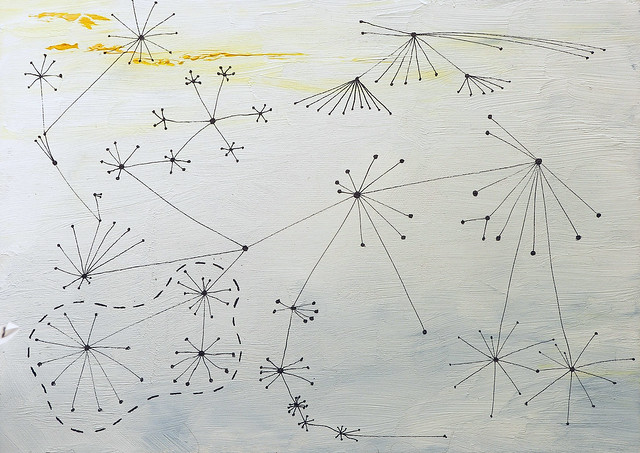
Another guiding mantra:
What value can we create through connection and flow?
There are really the two main ways that networks achieve what are called “network effects” (such as resilience, adaptation, small world reach …). If we are not talking about how a network does its work through leveraging, adding and shifting patterns of connection and flow, then we really are not bringing a network mindset to net work. When we do, this can help illuminate areas for adding and creating value – for example, bridging across various kinds of boundaries, temporal, geographic and cultural, or amplifying otherwise unheard or less resourced members.
Recent work with another network yielded the following list of functions, which they are continuing to play with:
[ap_spacing spacing_height="10px"]
- Build trusted relationships between multiple sectors and communities [ap_spacing spacing_height="10px"]
- Convene partners across state and sectors [ap_spacing spacing_height="10px"]
- Generate conversation among diverse partners [ap_spacing spacing_height="10px"]
- Identify newly arising (systemic) barriers so they can be addressed [ap_spacing spacing_height="10px"]
- Provide greater access to technical assistanceproviders [ap_spacing spacing_height="10px"]
- Facilitate access to relevant expertise (including lived experience), information and resources [ap_spacing spacing_height="10px"]
- Disseminate information about innovative approaches and policy priorities [ap_spacing spacing_height="10px"]
- Disrupt the status quo in the name of creating system change (ex. support litigation) [ap_spacing spacing_height="10px"]
- Contribute to movement; use innovation and creativity to inspire people to action [ap_spacing spacing_height="10px"]
- Curate relevant data, information, planning documents and other resources, and ensure community input is reflected [ap_spacing spacing_height="10px"]
What about you and your network(s)? What functions are you finding add the greatest value? How are you determining what you do best as a network, and where, and how you contribute to others?
originally published on 9/12/18 at Interaction Institute for Social Change
Lista de verificación Network Weaver
[ap_spacing spacing_height="15px"]
A spanish/english version of the Network Weaver Checklist, translated by Ulises Aguila.
[ap_spacing spacing_height="15px"]La Lista de control de Network Weaver se ha revisado de la versión del Manual del NW y en formato pdf para facilitar la impresión.
[ap_spacing spacing_height="15px"]Network Weaver Checklist is revised from the NW Handbook version and in pdf format to make it easy for you to print. This checklist is great to give to people in your network at a face-to-face gathering. [ap_spacing spacing_height="15px"]
For the english only version click here.
[ap_spacing spacing_height="15px"]
Network Weaver Virtual Cafe No. 3
[ap_spacing spacing_height="20px"]
THE PURPOSE of this monthly series of virtual cafes serves to deepen the learning community of network weavers by:
[ap_spacing spacing_height="20px"]
- learning about and supporting each other in our practice of network weaving [ap_spacing spacing_height="10px"]
- strengthening relationships and connecting capacities [ap_spacing spacing_height="10px"]
- attract more abundance for network weaver [ap_spacing spacing_height="20px"]
An open HOSTING TEAM designs, facilitates and documents these cafes. Hosts choose various formats they deem appropriate. If you want to co-facilitate, join the open chat for hosts
[ap_spacing spacing_height="25px"]
THE PROGRAM will be updated a few days ahead of each cafe:
[ap_spacing spacing_height="10px"]
- Learning wishes - what and how do we want to learn about network weaving? [ap_spacing spacing_height="10px"]
- Open Space - learning exchanges about topics you want to learn about[ap_spacing spacing_height="10px"]
- Peer Assist - supporting each other with current challenges[ap_spacing spacing_height="10px"]
For those who can only join for one hour, you can leave after the Open Space.
[ap_spacing spacing_height="25px"]
THE DETAILS:[ap_spacing spacing_height="10px"]
- FIND THE FACEBOOK EVENT LISTING HERE [ap_spacing spacing_height="10px"]
- ZOOM: https://zoom.us/j/158170326 [ap_spacing spacing_height="10px"]
- TIME: Thursday, April 4, 2019 at 4 PM – 6 PM UTC+01 (Find the time in your time zone) [ap_spacing spacing_height="15px"]
*** Please help energize this community of practice and the Networking Weaving Virtual Cafe call coming up on April 4th by taking a few minutes to participate this brief survey for this collaborative online process. The goal is to engage via the Codigital platform now through April 1, in order to identify and rank a set of powerful questions that we can consider during our call as well as via this Facebook group. This is also a chance to learn about Codigital, which I have found to be a really valuable, easy-to-use tool for group ideation.
[ap_spacing spacing_height="20px"]
DOCUMENTATION of previous cafe's can be found and edited HERE
[ap_spacing spacing_height="25px"]
by Adrian Röbke, Ben Roberts, A Keala Young, Tim Strasser, Jim Best, Nenad Maljković


